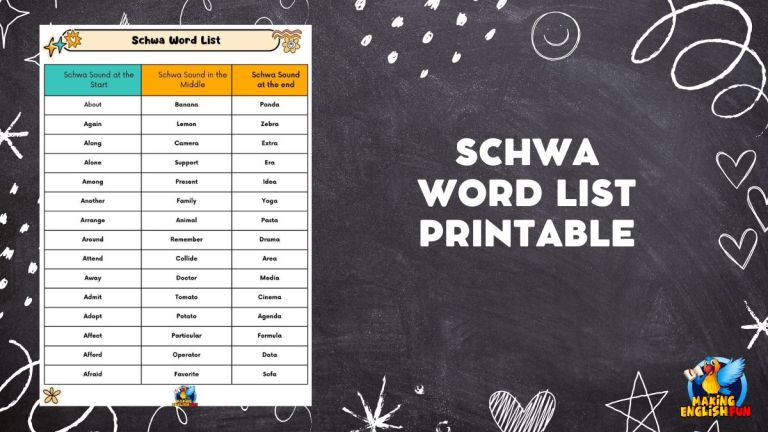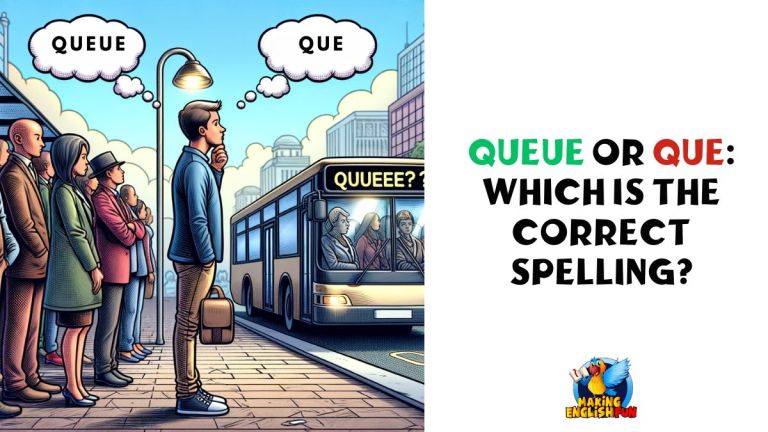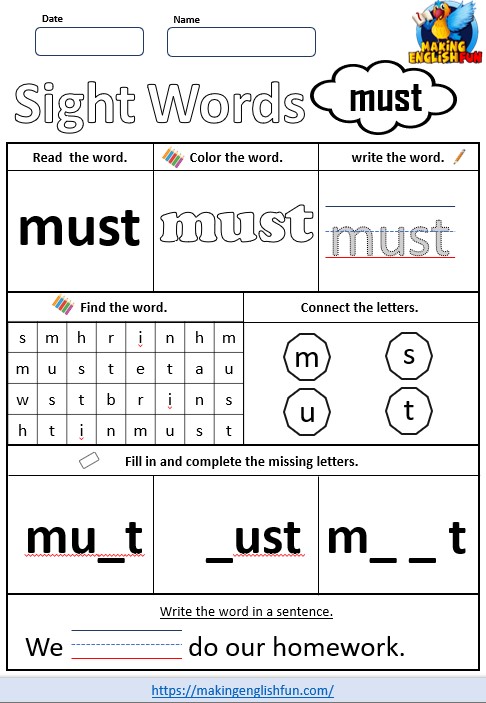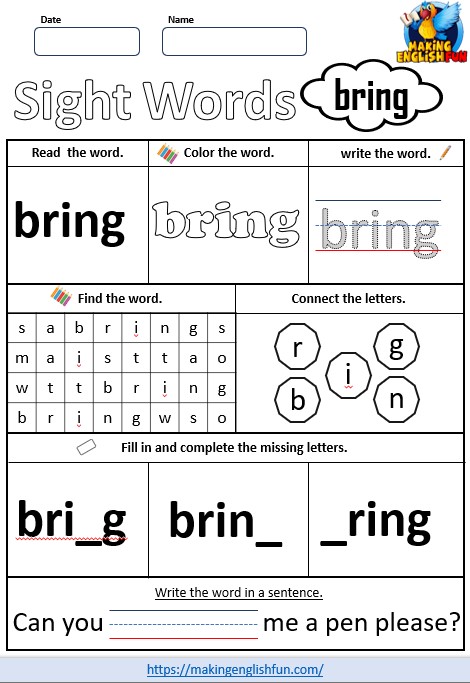FREE Non-Fiction Text Features Chart
Non-fiction texts are some of the most enjoyable reading sessions we do with our students. While stories and story books are great too, of course, there is something just incredible about teaching students about the oceans, the environment, space or our personal favorite Dinosaurs!
The features in a Non Fiction text play an important role in helping students understand and engage with informational content.
To help ( and frankly encourage) teachers and parents to embrace some non fiction texts and put down that well worn and loved copy of the Gruffalo (even if only for a little while) , we’re excited to offer a free non-fiction text features chart.
This tool is designed to make the various features commonly found in non-fiction texts easier to both explain and use in a classroom setting.
Hopefully it adds something to your reading lessons and maybe opens up a whole new text type top you and your students.
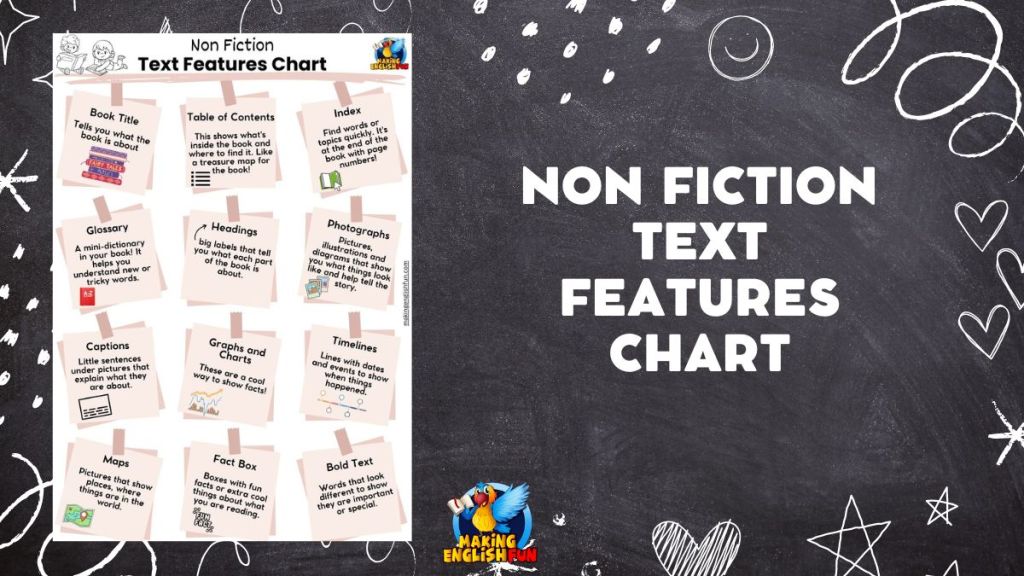
Our free chart is a step towards simplifying this learning process and you can download it from the Middle of this page.
Understanding Non-Fiction Text Features
Defining Non-Fiction Text Features
Non-fiction text features are the building blocks of informational texts. They include visual elements and organizational tools that help readers identify key concepts, understand content more deeply, and navigate through the text efficiently.
These features transform sometimes difficult information into manageable and engaging content – or in the case of young readers books they show the difference between fiction and non fiction books.
The Role in Comprehension and Engagement
Incorporating text features effectively in non-fiction reading enhances comprehension and engagement. They provide context, clarify meanings, and break down complex information into digestible parts.
For instance, a well-placed graph can convey data more effectively than text alone. Understanding these features allows students to understand texts better and to start to recognize the usefulness for their own work!
Fiction vs. Non-Fiction Structure
Unlike fiction, which primarily focuses on narrative and characters, non-fiction is structured around facts and real-world information.
This distinction is crucial as it guides the selection and use of text features.
For example, a timeline may be essential in a historical non-fiction book but less relevant in a fictional story. (Tomes like game of thrones aside that is)
What are the Non-Fiction Text Features
There are considerably more non fiction text features than fiction text onesso we have them in the list (and the downloadable Non Fiction Text Features Chart below)
Here are some key features often found in non-fiction texts:
- Table of Contents: Offers an overview of the book’s structure, helping readers locate information.
- Index: Lists keywords and topics with page numbers for quick reference.
- Glossary: Defines specific terms used in the text, enhancing vocabulary and understanding.
- Headings and Subheadings: Organize content into sections, signaling new topics or ideas.
- Photographs and Illustrations: Visual elements that complement and clarify the text.
- Captions: Brief descriptions of images, providing context or additional information.
- Graphs and Charts: Visual representations of data, making complex information easier to digest.
- Timelines: Sequence events chronologically, aiding in historical or sequential understanding.
- Maps: Geographical illustrations that provide context or location-based information.
- Fact Boxes or Sidebars: Highlight important information or interesting facts related to the main text.
- Bold or Italicized Text: Emphasize significant words or phrases.
Our free chart is a step towards simplifying this learning process and you can download it from the Middle of this page.
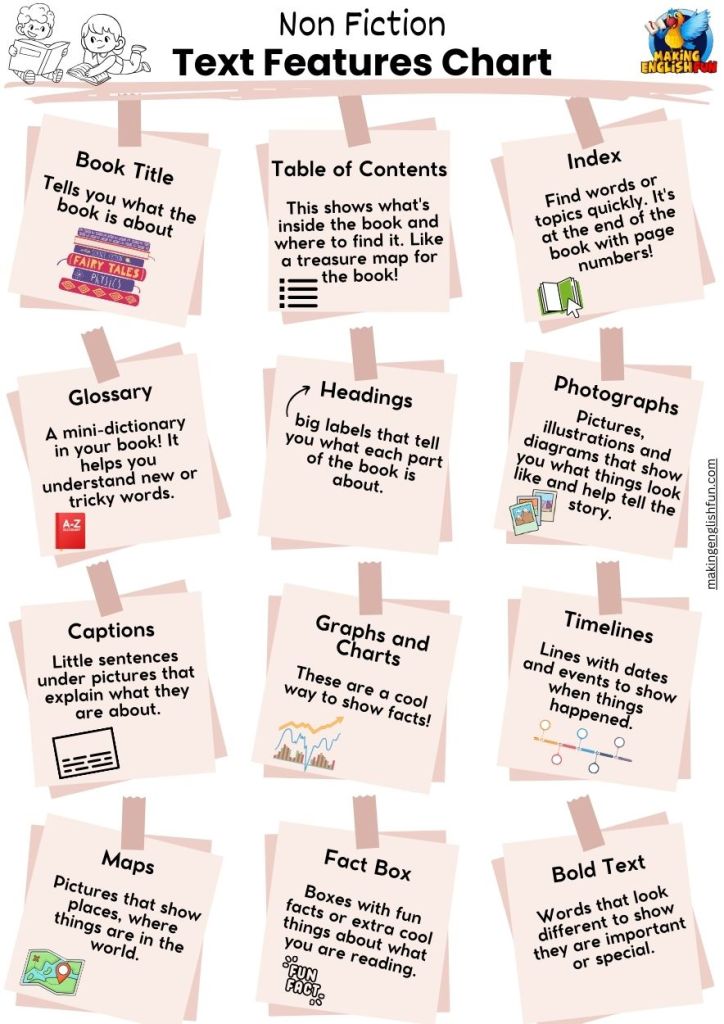
How to Use the Non-Fiction Text Features Chart
Effective Classroom Application
The aim is for this non-fiction text features chart to be more than just a visual aid; it’s aimed to be a teaching tool that can be used in a wide range of classroom activities.
We have made a start with some strategies for making the most out of this chart for you below:
- Interactive Lessons: Use the chart during reading sessions, encouraging students to identify and discuss each feature in the context of a selected text.
- Group Activities: Engage students in group work where they can use the chart to analyze a non-fiction book and present their findings to the class.
- Reference Tool: Keep the chart visible in the classroom as a constant reference, reinforcing the importance and utility of these features in everyday reading.
- Features Bingo: When ever you get to a new page offer a reward for the first student to spot a text feature on the page and be able to tell you what it is / what it is for.
Home Learning Support
For parents, this chart can be a resource to aid in home reading activities. It can guide discussions about the books their children are reading and help in developing a more structured approach to reading non-fiction texts.
Download Your Free Non-Fiction Text Features Chart
Accessing the Chart
We are delighted to offer this valuable resource for free. Teachers, parents, and educators can easily download the chart from our website. Upi can do this here or under the image above.
Chart Features and Adaptability
Our non-fiction text features chart is designed to be user-friendly and adaptable to various grade levels. Its clear, colorful layout makes it engaging for young readers, and the concise explanations are crafted to be easily understood by students of different ages.
Encouraging Feedback and Sharing
We welcome feedback on how the chart has been used in your classrooms or homes.
Sharing experiences can provide valuable insights for other educators and parents and foster a community of collaborative learning.
please do so in the comments section below.
we also have an in-depth article on text features you can use to help to teach these on the site and it is linked below. it also comes with printouts as well.
We also have an article on different essay types if you are looking to upscale your teaching.
Conclusion
The free non-fiction text features chart we provide is more than just a teaching aid; it’s a gateway to developing critical reading and thinking skills in young minds.
As teachers and parents, it’s our collective responsibility to equip children with the tools they need for academic success.
Incorporating this chart into your teaching resources is a step towards fulfilling this responsibility.
We encourage you to use it creatively and observe the improvement in your students’ or children’s progress with non-fiction texts.
References and Further Reading
- https://www.k12reader.com/worksheet/20-nonfiction-text-features-posters/
- https://www.bridgeprepriverview.com/ourpages/auto/2020/9/27/48540479/NonfictionTextFeaturesChart-1.pdf
- https://www.teacherspayteachers.com/browse?search=nonfiction%20text%20features%20chart
- https://www.rcps.us/cms/lib/VA01818713/Centricity/Domain/1446/text-features-chart-freebie.pdf


